Best Android camera phone 2024
Level up your camera game by switching to one of these phones.
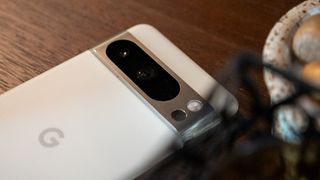
1. At a glance
2. Best overall
3. Best premium pick
4. Best budget choice
5. Best alternative
6. Best features
7. Best international
8. Best for pros
9. Best small flagship
10. Best foldable
One of the biggest reasons to buy a high-end phone is for the camera. Whether through computational processing or as many lenses as possible, phones are taking good enough photos these days that most people don't even consider a dedicated camera. Luckily, there are plenty of options for people who want effortless point-and-shoot style photography and those who want to go more in-depth or have different needs beyond the camera.
The options capable of delivering those results are also growing in number, which is why this list is filled with excellent choices. If you opt to go with the Google Pixel 8 Pro, Samsung Galaxy S24 Ultra, or OnePlus 12, you'll be getting a stellar camera for every situation.

For 20+ years, Ted Kritsonis has been spending a lot of time testing out gadgets to help others make the best decision with their hard-earned money. That includes taking countless photos with the latest Android phones, so Ted's picks come with many years of experience as a photographer.
At a glance
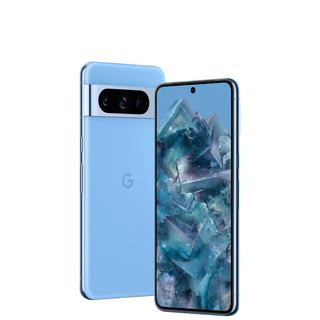
Best overall
Google's latest phone has a lot of cool new features that make it stand out against its rivals. The Pixel 8 Pro takes amazing shots in any situation, and offers editing features few can match — making it a good option for everyday photography.
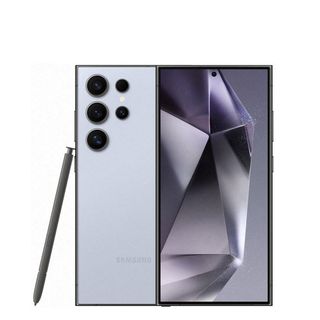
Best premium pick
Samsung Galaxy S24 Ultra features a powerful camera, bringing back a 200MP sensor on board for the main camera, including a new telephoto camera, and adding AI-driven editing features. It also offers more for more seasoned mobile photographers than most other brands do.
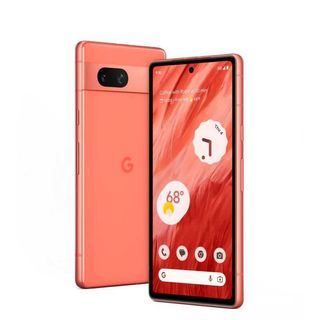
Best budget choice
Google has done it once again with the Pixel 7a. The phone has amazing cameras that are on par with the likes of the Pixel 7 Pro, and it has the same internal hardware as well. If you're looking to maximize value and get a great camera, you will not find a better deal than the Pixel 7a.
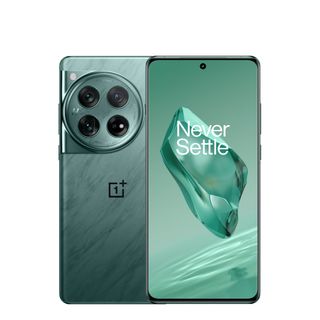
Best alternative
The partnership between OnePlus and Hasselblad continues to hit its stride in developing a camera system that can capture better images than before. Deep HDR color photos, unique filters, and solid software make this a superb performer in every situation.
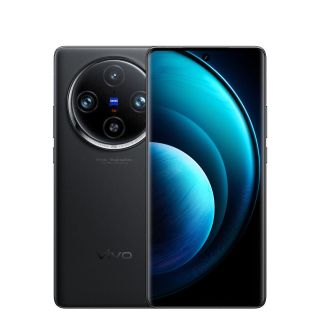
Best features
Run through the Vivo X100 Pro and its camera app, and you can't help but notice the bevy of photography features. Several modes open the doors to a whole lot of experimentation, whether it's the unique take on portrait shots or the surprisingly useful long exposure modes.
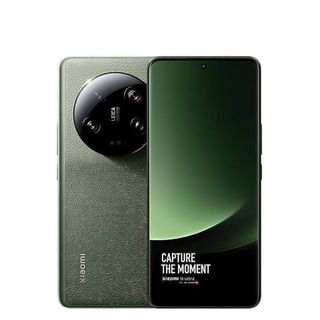
Best international
The Xiaomi 13 series is a mobile photographer's dream, and the Xiaomi 13 Ultra is a fabulous choice if you want high-resolution sensors that take brilliant photos in challenging scenarios. The device isn't available in North America, but you can still get your hands on one online.
Load the next 3 products ↓

Best for pros
All of the phones on this list can take very good photos and video, but if you want a more professional toolkit and give your video a cinematic look, the Xperia 1 V is easy to trust. With three cameras and a time-of-flight sensor, this phone has incredibly fast focus speeds, records in 4K HDR, and offers full manual video controls you won't find anywhere else.
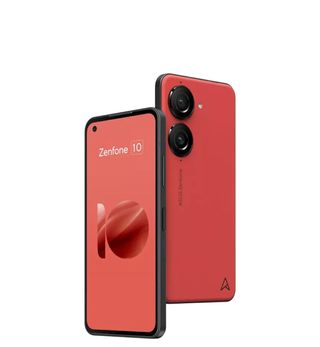
Best small flagship
It's missing a zoom lens, but the ASUS Zenfone 10 is an all-around perfect phone otherwise. This compact Android phone takes some excellent pictures with its 50MP Sony IMX766 f/1.9 lens. Video isn't disappointing either, with improved stabilization over the last-gen Zenfone 9.
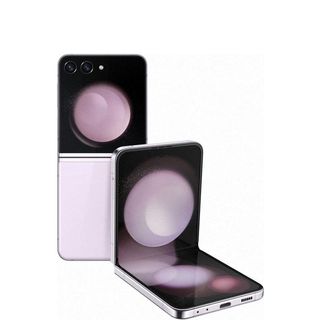
Best foldable
You can get super creative with the Samsung Galaxy Z Flip 5 and its folding display. Thanks to the dimensions of this modern flip phone, you get a camcorder-like experience with the Z Flip 5 folded in half, making for some interesting video and photo angles. The flexible device even lets you use the main cameras to snap front-facing shots.
Best overall
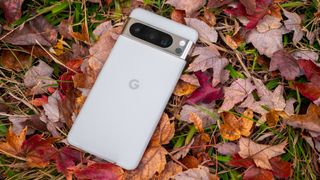
Specifications
Reasons to buy
Reasons to avoid
Google has gained a reputation for helping users capture amazing photos with Pixel phones, thanks in large part to the software computation processing those images. The software prowess melds nicely with the much-needed hardware upgrades in the Pixel 8 Pro, a device that proves its worth beyond just the camera array in our review.
To sweeten the deal, Google also answered calls from more seasoned mobile photographers with Pro mode manual controls for shutter speed, ISO, and focus, on top of the ability to take RAW photos at the full 50-megapixel resolution. Shooting modes remain limited compared to other Android flagships, but at least they're easy to learn, including Long Exposure and Action Pan.
The suite of AI tools also get a boost with things like Audio Magic Eraser and Magic Editor, plus cool ones like Video Boost, Night Sight Video and Zoom Enhance. Magic Eraser and Photo Unblur are still available, serving up an editing package that's hard to beat for its simplicity.
Powering all that is Google's own Tensor G3 processor, which also increases efficiency enough to help the Pixel 8 Pro last longer with each charge. With seven years of Android and security updates, this phone will be upgradeable until 2030 for longevity that few can match.
Best premium pick

2. Samsung Galaxy S24 Ultra
Our expert review:
Specifications
Reasons to buy
Reasons to avoid
The Samsung Galaxy S24 Ultra is the best phone you can find that comes with a stylus, since the S Pen comes included. The pen can play an active role in capturing photos when using it as a remote shutter by just clicking the button to snap a shot. It's not a new feature, by any means, given past Samsung flagships also do it, but it's still a unique use case among Android devices.
The Galaxy S24 Ultra borrows heavily from the previous S23 Ultra, which is why the camera system appears (on paper) to be the same. There is a new image sensor for the big 200-megapixel wide camera, along with a brand new 50-megapixel periscope telephoto lens that can give you very clear shots at up to 10x hybrid zoom. Throw in a 48-megapixel ultrawide — and improved low-light and night photography on all of them — and you have stellar mix to work with. Expert RAW can capture images at full 50-megapixel resolution, while Samsung’s Camera Assistant app offers a great helping hand.
That also goes for the editing process. Newer "Galaxy AI" features include the ability to smartly remove shadows or reflections, re-apply subjects to different parts of an image, or get rid of people or objects in the background. Circle to Search also lets you do a Google search based on items you photograph with the phone.
All of this comes courtesy of the Snapdragon 8 Gen 3 for Galaxy Devices chipset, a unique processor that drives the generative AI features seen in the phone. The only thing is you pay a real premium to get everything the S24 Ultra gives you.
Best budget choice
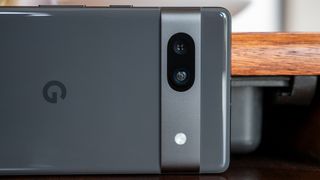
Specifications
Reasons to buy
Reasons to avoid
Give Google credit, it doesn't leave its more affordable phones behind, and the Pixel 7a is no exception, not just because it gets the latest Android updates, but also because the camera gets better too. The phone punches above its weight in a variety of ways, which we found most impressive in our review.
The beauty of this is that you get a seriously competitive camera at a mid-range price — even lower if you compare it to others. Google's Tensor G2 processor now has a successor (see Pixel 8 phones), but it's still very efficient and capable of handling the demands of the camera and smart editing features like Magic Eraser and Photo Unblur. Despite missing a telephoto lens, the onboard cameras here are capable of capturing memorable images from any occasion with little effort.
It's unfortunate the screen only has a 90Hz refresh rate, with so-so battery life on the device on top of that, but it made our list of the best cheap Android phones for good reasons. You can expect five years of software updates to keep the phone current, so if your budget sits under $500, you'd be hard-pressed to find better value.
Best alternative
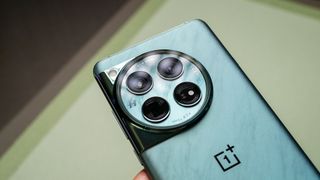
4. OnePlus 12
Our expert review:
Specifications
Reasons to buy
Reasons to avoid
If you're not sure about whether OnePlus can hang with the big guns, think again. The OnePlus 12 earns its keep as a bona fide Android flagship, and the consistency of the camera is a big reason why.
The key is in the collaboration with Hasselblad, the renowned Swedish camera brand, whose input in how the OnePlus 12 captures photos makes a real difference. Hasselblad's color calibration leads to more natural tones in every image, along with the option to choose from various filters based on Hasselblad's legacy of film photography. The results should speak for themselves, but there are so many tools to work with in the camera app worth experimenting.
That includes a new Master mode with manual controls, Long Exposure, Hasselblad's XPan, and even a Movie mode for cinematic video output. The curved display makes ergonomics a little harder to handle compared to flatter screen alternatives, but there's no doubt this is a sleek device in any pair of hands.
OxygenOS remains one of the nicest Android overlays to use, while the Snapdragon 8 Gen 3 processor does the job — thanks to a new vapor chamber — of keeping things smooth and cool. Battery life is ridiculous when considering the 80W charger can fully charge the OnePlus 12 in just 30 minutes.
Best features
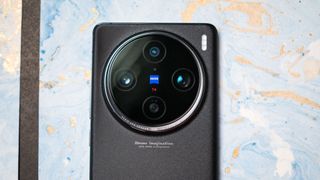
Specifications
Reasons to buy
Reasons to avoid
Even if you've never heard of Vivo, it wouldn't be a bad idea to start paying attention because it routinely delivers one of the best mobile photography experiences around. Part of that is because of the excellent collaboration with Zeiss, the storied German imaging brand that brings its expertise to the superb results we got when testing the X100 Pro.
An abundance of shooting modes lead to various avenues of experimentation, letting you really choose how to compose and capture a scene. The 50-megapixel telephoto lens may be the best in the industry at this point, capable of freezing action into sharper detail in ways others simply can't. The front camera may be a weak spot, but in the grander scheme, the rear cameras produce some of the best shots you'll find on any Android phone in 2024.
It's just too bad it's not as readily available as others are in North America. You can get your hands on one online, but don't go looking for it in stores. If you do grab one, know that you get multi-year Android updates and more durable IP68 protection in case you want to get adventurous with those cameras.
Best international

Specifications
Reasons to buy
Reasons to avoid
The sheer fact Leica is involved with the Xiaomi 13 Ultra should provide incentive to consider it as your next phone camera. In fact, one could even argue the device is more like a camera with a phone attached rather than the other way around. Much like we found in our review, the phone it top-notch — and there's a global version available.
The 13 Ultra is a rarity in that its main camera uses a 1-inch sensor. There are technicalities involved that mean you don't always get the full gamut of that sensor, but needless to say, it's capable of capturing outstanding photos. It's no exaggeration to suggest it can outduel any phone on this list, and the Leica presence is a big reason why. Both the default Leica Authentic and Vibrant modes are fantastic in their color tones, while the software does a stellar job in virtually any set of conditions. That Xiaomi also wisely changed the overall interface only helps matters further. There's even an optional camera grip you can get for this phone to turn it into a classic point-and-shoot.
You have to accept three years of Android updates (compared to four or more from others) and the limited availability means you'll have to buy this one online. Bloatware continues to decline with each successive Xiaomi device, but you'll have to do a little clean up once you get your hands on one to make way for what you want to use.
Best for pros
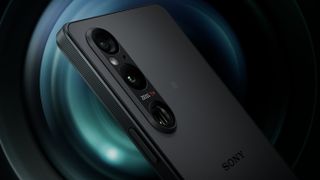
7. Sony Xperia 1 V
Our expert review:
Specifications
Reasons to buy
Reasons to avoid
If you assessed the Sony Xperia 1 V entirely on how it takes photos right out of the box, you might come away disappointed, but there's more than meets the eye. The phone comes with two camera apps, and the one that will turn more heads is the Photography Pro app, which offers a high level of control over composition before you capture anything.
A good example of that is the variable lens where you can zoom at 3.5x and 5.2x without losing resolution, not to mention the physical shutter button that will lock focus when you half press it — just like an actual camera. If you want to use the Xperia 1 V as an external monitor with select Sony mirrorless cameras, you can do so by connecting the two via USB.
Then there's video, where you have not one, but two pro apps to work with, Videography Pro and Cinema Pro. All the granular controls available for photos apply here, and then some, giving you the highest level of autonomy over how to frame and capture your footage. Overall, the camera features dominate this phone, which helps explain the finicky fingerprint sensor and lack of fast charging, in particular.
Best small flagship

Specifications
Reasons to buy
Reasons to avoid
Android phones, especially on the flagship end of things, continue to get bigger, leaving smaller one-handed (for most people) options a rarer sight to see. The ASUS Zenfone 10 bucks that trend by delivering solid performance in a phone that proves to be easy to use and simple to shoot photos with.
ASUS didn't overhaul anything here from the previous Zenfone, but did make some refinements that help with the overall imaging experience. One of them is a real-time image stabilization mode to offset handshake, along with a Light Trail mode that works well handheld. All told, you get a more reliable camera setup this time around, meaning you can trust the Zenfone 10 will produce good results in a greater variety of circumstances.
Unfortunately, you have to make due without a telephoto camera, one of the big casualties of going smaller on this phone. ASUS also only promises two years of Android upgrades, lagging behind others in the list, yet still standing out because of its more relatively diminutive size. Small or not, the Zenfone 10 gives you a headphone jack and large battery, so size matters differently here.
Best foldable

Specifications
Reasons to buy
Reasons to avoid
With the Samsung Galaxy Z Flip 5, it's not as much about how good the photos look, but also how you go about taking them. A much larger 3.6-inch Cover Screen changes a whole lot when it comes to framing a shot, much like the folding hinge does plenty for bringing out the creativity in the angle or perspective you choose to take when capturing images. Set it down upright or sideways and see what you come up with.
There's no telephoto camera here, so you have to make due with a wide and ultra-wide that carry over from the previous Galaxy Z Flip 4. Except the software is better this time, helping produce good shots in most situations. Whether flat or folded, you can take advantage of the Cover Screen to take selfies with the better rear cameras — a far more difficult task with standard smartphones.
While more durable as far as water resistance goes, be aware of letting the Flip 5 get dusty because there's no IP protection for that. With the right case, you can add some protection and maybe even find functional ways to use it for creative video or photography as well.
If we're making some Android camera suggestions
Why you can trust Android Central
The Google Pixel 8 Pro comes out on top because of its consistent performance in every condition, including when pets or kids won't stop moving. It's hard to top it, or any other Pixel phone really, as one of the best Android phones around based on its fantastic ability to capture beautiful photos in every situation without any tweaking, guessing with settings, or edits after capture. It doesn't hurt that it's also easier to learn for novice photographers.
But you'd be remiss to not consider Samsung's Galaxy S24 Ultra, which provides the best quality zoom and cropping at almost any level, including some seriously ludicrous quality even beyond 30x zoom. It's also a consistently excellent low-light performer and takes the best video of any Android phone available in most countries.
Be an expert in 5 minutes
Get the latest news from Android Central, your trusted companion in the world of Android

Ted Kritsonis loves taking photos when the opportunity arises, be it on a camera or smartphone. Beyond sports and world history, you can find him tinkering with gadgets or enjoying a cigar. Often times, that will be with a pair of headphones or earbuds playing tunes. When he's not testing something, he's working on the next episode of his podcast, Tednologic.
- Namerah Saud FatmiEditor — Accessories, speakers, and tablets
